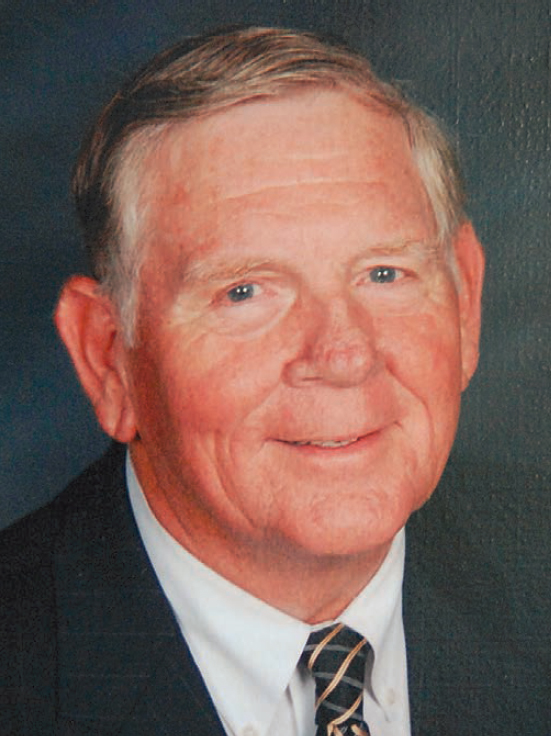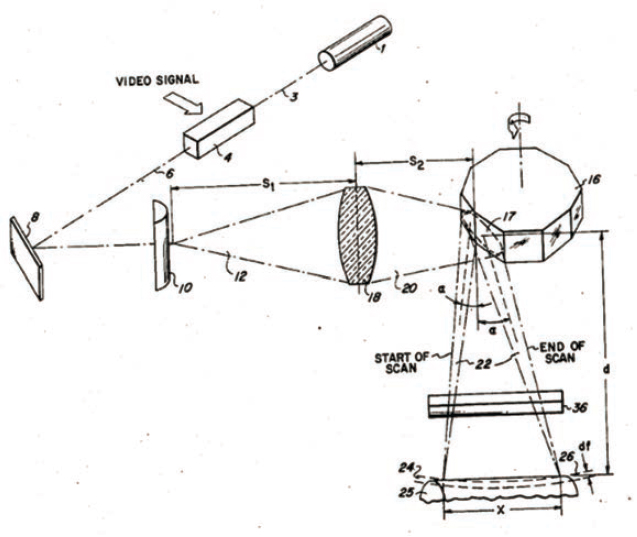
GARY K. STARKWEATHER
1938–2019
Elected in 2004
“For the innovative application of optical technologies to computing, including the invention of the laser printer.”
BY BOB SPROULL AND TURNER WHITTED
GARY KEITH STARKWEATHER, 81, died December 26, 2019, in Orlando, Florida. He was known principally as the inventor of the laser printer while at Xerox Corp. in the early 1970s, and he later contributed to imaging technologies at Apple and Microsoft.
He was an exceptional innovator known for his imagination, hard work, and utter joy when prototyping and tackling challenging problems, all with ever-present humor. He was a welcoming and generous collaborator who engaged many colleagues to help him build successive prototype laser scanners perched atop gutted copiers to be part of a computer printing system, eventually producing several dozen networked printers operated inside Xerox and at a few external test sites. The technology became the basis for the Xerox 9700 product, a two-page-a-second computer printer, often printing a billion sheets a month. It became a multibillion-dollar business for Xerox.
Gary was born January 9, 1938, in Lansing, Michigan. He was a precocious tinkerer in junior high, encouraged by teachers and local automotive engineers. He liked to understand how things “really worked” and because equations explained how things worked, he majored in physics at Michigan State University. While working with a physics professor, he
became fascinated by optics: gratings, spectroscopy, absorption measurements. He also met Joyce Attard, an undergraduate 2 years behind him; they married after she finished college, and moved to Rochester, New York, where Gary went to work for Bausch & Lomb and pursued a master’s degree in optics from the University of Rochester. He soon moved to Xerox, where the then-new company was looking for new markets for xerography.
He proposed improvements to LDX, a struggling product to print images digitized with a flying spot cathode ray tube (CRT), transmitted over high-speed telephone lines, and imaged with another flying spot CRT onto a xerographic printer. To increase the exposure intensity and thus the printing speed he proposed using a laser light source rather than a CRT; lasers had been invented only a few years earlier. Management did not encourage him.
But Gary’s imagination was not daunted: he realized he could build a laser-exposed digital printer for data coming from scanners or generated by computers. He started putting together prototypes: deflecting a laser beam with a spinning multifaceted polygonal mirror, modulating the beam with a Pockels cell, and focusing the beam spot on the photosensitive drum of a Xerox copier with its optical imaging components removed.
There were many practical problems, and key components were expensive and unreliable. Gary was briefly stymied by the imperfect alignment of the mirror faces of the polygon, which resulted in unacceptably uneven scan-line spacing on the drum. A more accurate polygon would be too expensive. During an unrelated meeting, he realized that an altered optical system could solve the problem with a cylindrical lens, a $10 part from Edmund Scientific, which worked marvelously in his prototype. “It’s as close as any inventor ever comes to a Eureka moment, that a device that costs $10 fixes a $15,000 problem.” Figure 1 of US Patent 3,995,110A shows the essence of Gary’s invention.
Gary didn’t stop with a proof of concept in 1971: he wanted a practical, robust, fieldable system. He moved to the Xerox Palo

Alto Research Center (PARC) to find more supportive management and a collection of collaborators who could build the digital hardware and software to drive his printers. He made many improvements to improve reliability and reduce cost: a HeNe laser and a red-sensitive photoconductor, an electrooptical modulator (newly available), optimized designs for the polygon motor and its drive electronics, and others. The Alto personal computer developed at PARC, augmented with hardware to generate page images and send them to Gary’s printer, was the first printer server.
In getting to a persuasive prototype, Gary overcame many obstacles with solutions that often showed his imagination. When his lab was moved to a building about 2500 feet away from a unique computer setup that provided video bit streams
to test his scanner, Gary set up two optical links, each with a transmitter (laser, modulator, inexpensive astronomical telescope) and a receiver (telescope, filter, photomultiplier) on the building rooftops to connect the systems. A microwave link would not have had enough bandwidth; even the time-of-flight delay of the optical link delayed the video data enough to shift all the images 1 inch to the right on the page. If it rained heavily, the roofs of the buildings would sag, the telescopes would go out of alignment, and Gary and his friend Bob Kowalski would take to the roofs with walkie-talkies to tune everything up (fortunately, from April to November, it hardly rains in Palo Alto, and no adjustments were needed). Testing proceeded.
Gary and collaborators drove his prototype printer into limited production as the Dover printer using surplus Xerox 7000 copiers. Several dozen were built and deployed around Xerox on its digital network as well as at test sites, including several university computer science departments. He also adapted his design to a quite different copier, the Xerox 9200, which imaged two pages per second on a blue-sensitive photoconductor belt. With electronics derived from the PARC prototypes, this became the Xerox 9700 computer printer, a hugely successful product for Xerox at a time when its traditional copier market was being challenged by smaller less expensive copiers from Japan.
Laser printers based on Gary’s design sprouted a large industry, fueled by rapidly declining costs of digital electronics and computers, by new modulator and laser designs (especially laser diodes), and by software such as Adobe’s Postscript to generate and print complex page images. Gary foresaw that personal computers would come to dominate imaging and printing, and in 1988 he moved to Apple Computer to work in publishing and color standards. He developed the ColorSync system for calibrating color displays, using all his charm to move his ideas into products.
Gary joined Microsoft in 1997 as an architect specializing in color management. From the beginning he was the authority on color and displays with expertise recognized
throughout the company. In October 1998 he moved to Microsoft’s research division (MSR) as a founding member of the Hardware Devices Group. The research venue gave him the tools and freedom to return to his natural mode of experimenting, building, and inventing. Just as one would expect, an optical bench with assorted lasers soon appeared in the center of the group’s hardware lab. He mentored many engineers at Microsoft, inviting them into the lab “to fail fast and often” working on new ideas.
His contributions went far beyond novel optics for displays as he advised and collaborated on projects ranging from smart watches to MEMS devices to digital photography.
From carefully selected off-the-shelf components he constructed a wall-sized multipanel display placed in a highly visible wall of the hardware lab. Visitors entering the building through the atrium would glance through the glass walls of the lab and ask “what is that?” and “where did that come from?” As he had done throughout his career, he built things that changed the way other people thought about technology.
At the desktop scale he combined three projectors and a curved diffusing surface into a desktop display surface 44 inches wide known as DSHARP. No one at Microsoft had experienced such a desktop before. His design was duplicated and copies were moved to various product groups in the company to sell the notion of a “desktop surround.” In MSR the Human-Computer Interaction group conducted a user study to evaluate the utility of such a large display surface. They were not surprised to discover the large display’s improvement in user productivity.
In 2005 Gary decided it was time to retire. He and Joyce moved to DeBary, Florida, close to a golf course. But Microsoft was not ready to let him go. With the title “researcher emeritus” he agreed to return to Redmond, Washington, for at least 1 week each year. Each of those weeks was filled by meetings with people throughout the company who sought his advice on just about every known topic. One remarked, “folks from across the company would literally line up to visit with him to discuss challenging problems.”
Of the numerous honors Gary received, he was most proud of induction into the Inventors Hall of Fame in 2012. He shared a Scientific and Engineering Award (an Oscar) from the Academy of Motion Picture Arts and Sciences in 1994 for work on film scanning for Lucasfilm’s Star Wars. He received major awards from the Optical Society of America and the Society for Information Display, which made him a fellow in 2003, and he was elected to the NAE in 2004.
Gary embraced and often cited Einstein’s observation that imagination is more important than knowledge. His career and contributions are glorious exhibits of the power of imagination and the ingenuity to realize his visions. All who worked with him remember fondly his humor and high spirits.
He is survived by Joyce, their children Amy Beth (John) Oosterhouse and Keith David Starkweather (Vanessa Nanette Dixon), and four grandchildren.








